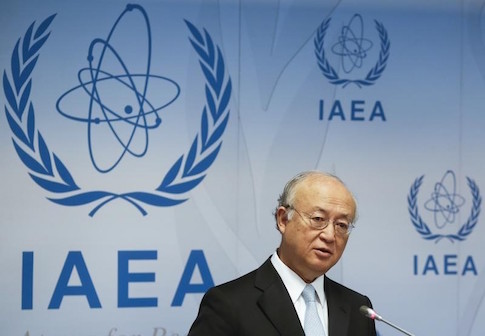By Shadia Nasralla
VIENNA (Reuters) - Iran appears to have built an extension to part of its Parchin military site since May, the U.N. nuclear watchdog said in a report on Thursday delving into a major part of its inquiry into possible military dimensions to Tehran's past atomic activity.
A resolution of the International Atomic Energy Agency's Parchin file, which includes a demand for fresh IAEA access to the site, is a symbolically important issue that could help make or break Tehran's July 14 nuclear deal with six world powers.
The confidential IAEA report, obtained by Reuters, said:
"Since (our) previous report (in May), at a particular location at the Parchin site, the agency has continued to observe, through satellite imagery, the presence of vehicles, equipment, and probable construction materials. In addition, a small extension to an existing building appears to have constructed."
The changes were first observed last month, a senior diplomat familiar with the IAEA investigation said.
The IAEA says any activities Iran has undertaken at Parchin since U.N. inspectors last visited in 2005 could jeopardize its ability to verify Western intelligence suggesting Tehran carried out tests there relevant to nuclear bomb detonations more than a decade ago. Iran has dismissed the intelligence as "fabricated".
Under a "roadmap" accord Iran reached with the IAEA parallel to its groundbreaking settlement with the global powers, the Islamic Republic is required to give the Vienna-based watchdog enough information about its past nuclear activity to allow it to write a report on the long vexed issue by year-end.
"Full and timely implementation of the relevant parts of the road-map is essential to clarify issues relating to this location at Parchin," the new IAEA report said.
According to data given to the IAEA by some member states, Parchin might have housed hydrodynamic experiments to assess how specific materials react under high pressure, such as in a nuclear blast.
"We cannot know or speculate what's in the (extended) building. The building itself is not related to the most interesting building for us ... It's something we will technically clarify over the course of the year," the senior diplomat said.
GROUNDBREAKING NUCLEAR ACCORD
Under its Vienna accord with the powers, Iran must put verifiable limits on its uranium enrichment program to create confidence it will not be put to developing nuclear bombs, in exchange for a removal of sanctions crippling its oil-based economy. Iran has said it seeks only peaceful nuclear energy.
Iran has for years been stonewalling the IAEA inquiry into possible military dimensions (PMD) to its nuclear project. But the Islamic Republic delivered on a pledge under the roadmap to turn over more information by Aug. 15.
The IAEA report said the agency was still reviewing the PMD information Iran provided. Agency Director-General Yukiya Amano said on Tuesday that the information was substantive but it was too early to say whether any of it was new.
A second diplomat familiar with the Iran file said he did not expect any breakthrough from the documents provided by Iran.
While sticking to its mandate of securing compliance with its non-proliferation mandate, diplomats see the IAEA as being keen not to imperil Iran's pact with the powers, who tout it as crucial to reducing conflict in the Middle East.
The success of that deal will hinge on IAEA verification of Iranian compliance, but the agency must still issue reports that are technically sound. "It's a question of how they will reflect this in a more or less elegant way," a third diplomat said.
The IAEA has come under pressure, especially from U.S. lawmakers who will hold a critical vote next month on whether to ratify the deal between Iran and the powers, for not publishing its roadmap agreement with Tehran.
On that point, the senior diplomat said: "The agency is doing nothing in Iran in this area that it hasn't been doing or is not doing somewhere else. There are no cutting corners in Iran."
Amano last week rejected as "a misrepresentation" suggestions from hawkish critics of the nuclear accord that the IAEA had quietly agreed to allow Iran to inspect sections of Parchin on the agency's behalf.
(Editing by Mark Heinrich)
